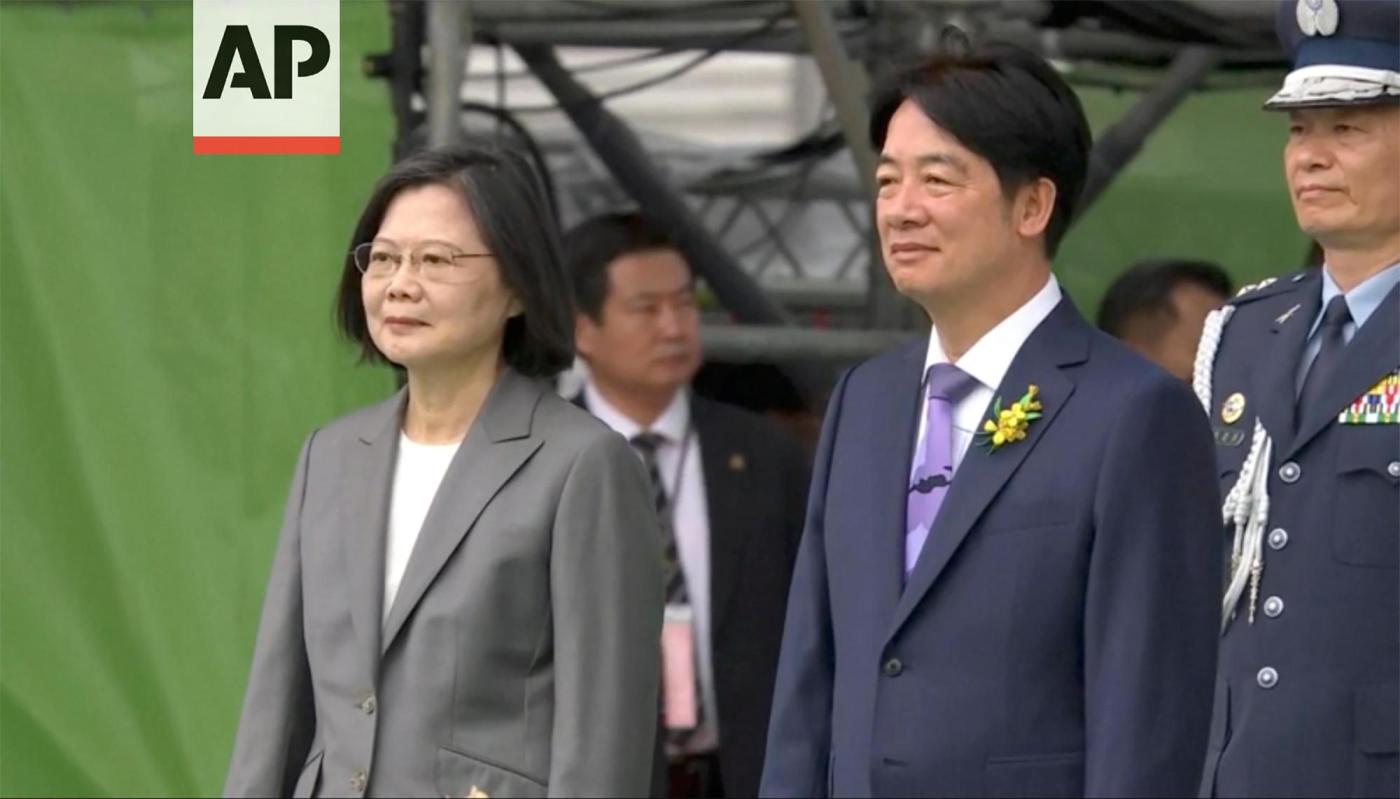By Christopher Bodeen and Simina Mistreanu | Associated Press
TAIPEI, Taiwan — Lai Ching-te was sworn in as Taiwan’s new president Monday, beginning a term in which he is expected to continue the self-governing island’s policy of de facto independence from China while seeking to bolster its defenses against Beijing.
Thousands of people gathered in front of the Presidential Office Building in Taipei for the ceremony. Donning white bucket hats, the attendees watched on large screens the ceremony’s emcees narrating Lai’s swearing-in ceremony, followed by a military march and colorful artistic performances featuring folk dancers, opera performers and rappers. Military helicopters flew in formation, carrying Taiwan’s flag.
Lai accepted congratulations from fellow politicians and delegations from the 12 nations that maintain official diplomatic relations with Taiwan, as well as politicians from the U.S., Japan and various European states.
Lai, also known by his English name William, has vowed to continue his predecessor’s push to maintain stability with China while beefing up Taiwan’s security through imports of advanced fighters and other technology from close partner the U.S., the expansion of the defense industry with the manufacture of submarines and aircraft, and the reinforcing of regional partnerships with Taiwan’s unofficial allies such as the U.S., Japan, South Korea and the Philippines.
U.S. Secretary of State Antony J. Blinken congratulated Lai on his inauguration. “We look forward to working with President Lai and across Taiwan’s political spectrum to advance our shared interests and values, deepen our longstanding unofficial relationship, and maintain peace and stability across the Taiwan Strait,” Blinken said in a statement from his office.
Lai, 64, takes over from Tsai Ing-wen, who led Taiwan through eight years of economic and social development despite the COVID-19 pandemic and China’s escalating military threats. He is seen as inheriting her progressive policies, including universal health care, backing for higher education and support for minority groups, including making Taiwan the first place in Asia to recognize same-sex marriages.
Lai, who was vice president during Tsai’s second term, came across as more of a firebrand earlier in his career. In 2017, he described himself as a “pragmatic worker for Taiwan’s independence,” drawing Beijing’s rebuke. He has since softened his stance and now supports maintaining the status quo across the Taiwan Strait and the possibility of talks with Beijing.
Beijing claims Taiwan as its own territory and has been upping its threats to annex it by force if necessary.
Lai will build on Tsai’s efforts to strengthen ties with the U.S., which doesn’t formally recognize Taiwan as a country but is bound by its own laws to provide the island with the means to defend itself.
During Tsai’s tenure, Taiwan became the first society in Asia to legalize same-sex marriage, though critics say she skirted political responsibility by leaving the decision up to the Supreme Court and a series of referendums.
Related Articles
Sen. Glazer endorses Barbanica for supervisor
California GOP convention: Lara Trump doubles down on election rigging claims
Paul Pelosi attack: Judge grants motion to reopen David DePape’s sentencing
They said it: The mind of a marathon swimmer
GOP’s Kristi Noem assails Newsom, Biden at California convention
She oversaw a controversial pension and labor reform and extended the military conscription length to one year. She also kickstarted a military modernization drive, including a program for building indigenous submarines at more than $16 billion each.
Tsai’s leadership during the pandemic split public opinion, with most admiring Taiwan’s initial ability to keep the virus largely outside its borders but criticizing the lack of investment in rapid testing as the pandemic progressed.
Follow AP’s Asia-Pacific coverage at https://apnews.com/hub/asia-pacific












